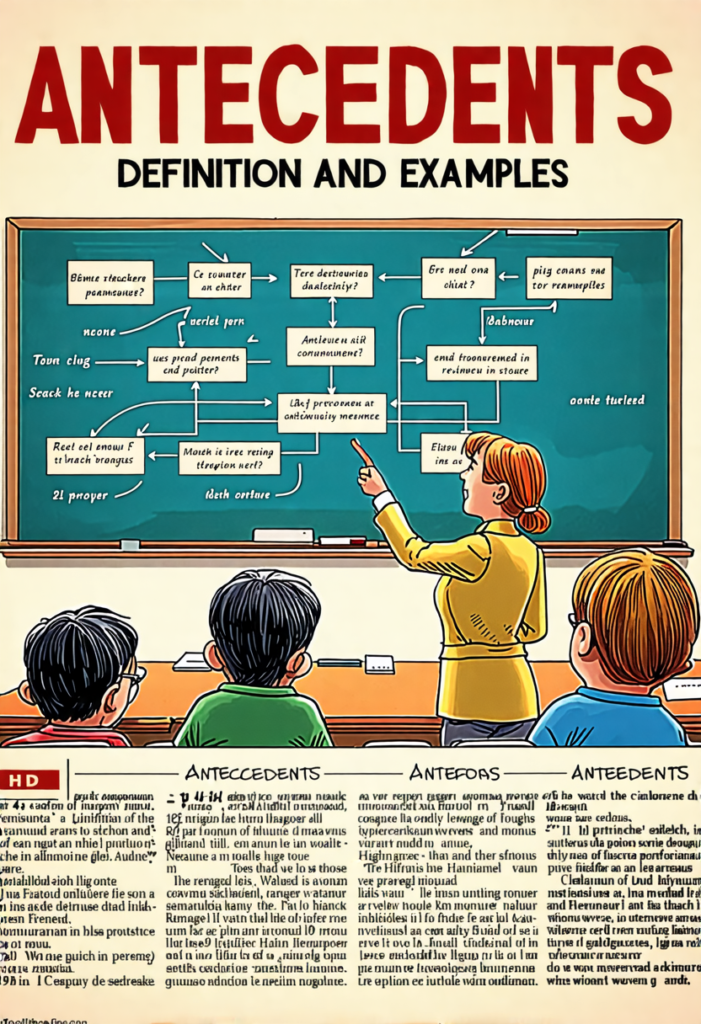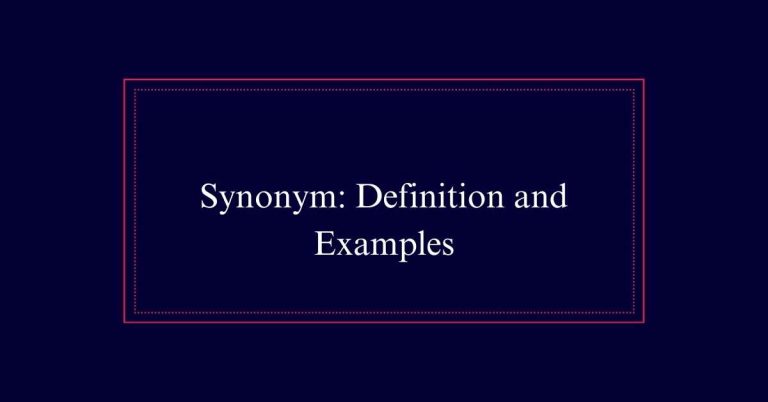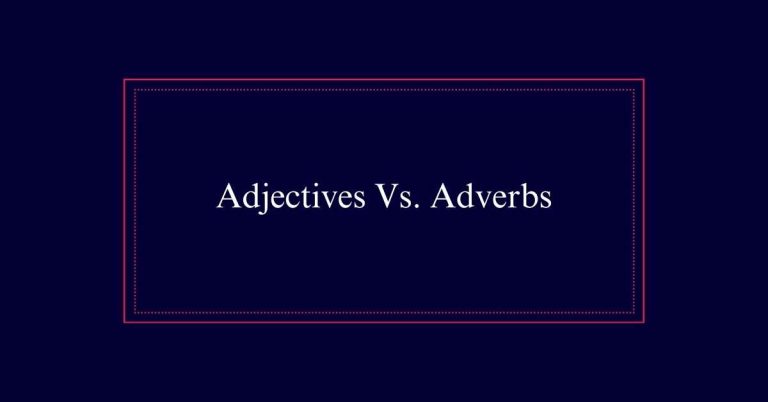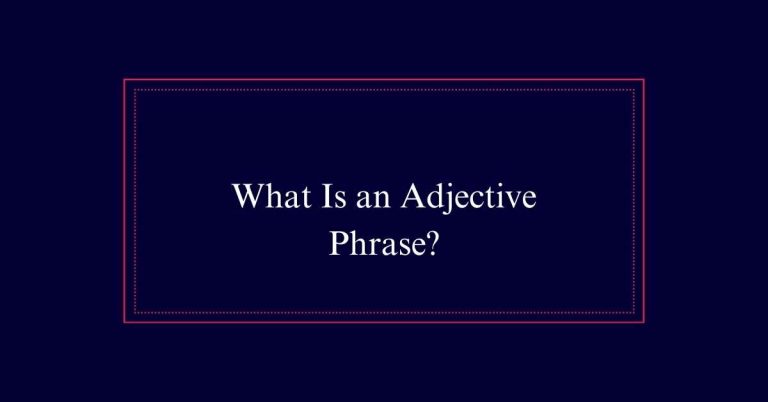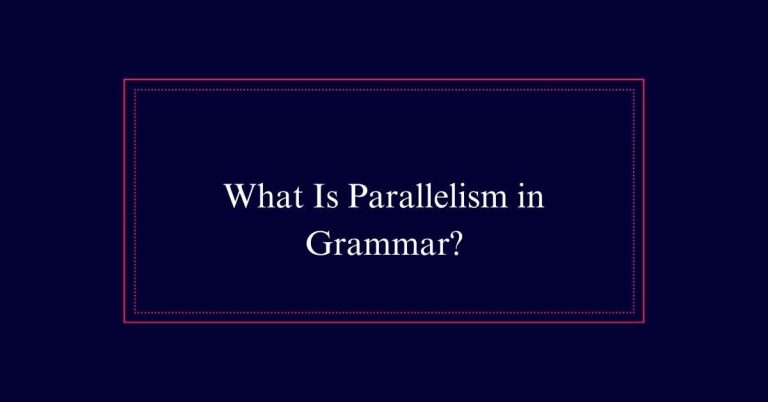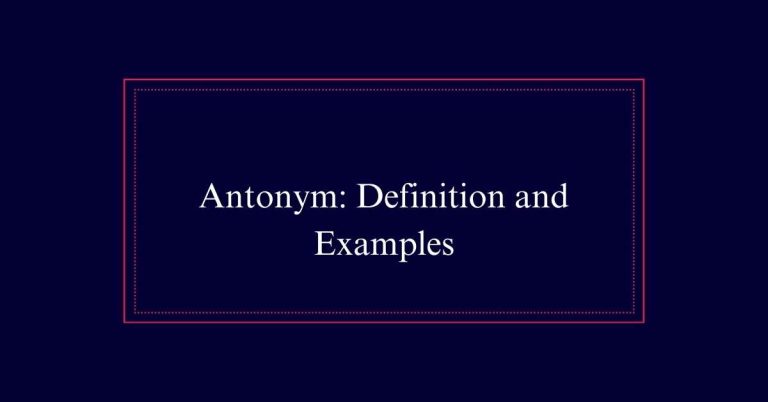Antecedents: Definition and Examples
An antecedent is a noun or noun phrase that a pronoun refers to in a sentence. It secures clarity by specifying the pronoun’s reference. For instance, in the sentence ‘The cat chased its tail,’ ‘the cat’ is the antecedent of ‘its.’
Proper antecedent usage avoids ambiguity, making writing clearer and more coherent. Agreement in number and gender between antecedents and pronouns is essential; for example, ‘Mary lost her keys’ is correct because ‘Mary’ (singular) matches ‘her’ (singular).
What Are Antecedents?
An antecedent is a noun or noun phrase that provides the reference for a pronoun. This means it tells us what or whom the pronoun refers to. For example, in the sentence ‘Sarah lost her keys,’ the word ‘Sarah’ is the antecedent of the pronoun ‘her.’
Using antecedents helps avoid confusion by making it clear who or what the pronoun is about. The term ‘antecedent’ comes from the Latin word ‘ante,’ meaning ‘before’ or ‘in front of.’ Antecedents are essential for clear communication in writing. They prevent ambiguity and make sentences easier to understand.
Role of Antecedents
Often, antecedents play a crucial role in guaranteeing that pronouns have clear and specific references, thereby maintaining the clarity of communication in writing.
By providing a clear referent for pronouns, antecedents prevent ambiguity and confusion. For example, in the sentence ‘Lisa forgot her book,’ ‘Lisa’ is the antecedent that clarifies who ‘her’ refers to. This establishes a precise connection, making the sentence easy to understand.
Without a clear antecedent, pronouns can lead to misinterpretation. Proper use of antecedents not only enhances readability but also ensures that the writing remains coherent. They are essential tools in constructing well-defined and effective sentences, contributing significantly to clear and precise communication in both formal and informal contexts.
Origin of Antecedents
The term ‘antecedent’ comes from the Latin word ‘ante,’ which means ‘before’ or ‘in front of.’ In grammar, this term evolved to describe a noun or noun phrase that precedes a pronoun.
The concept highlights the relationship between a pronoun and its referent, ensuring clarity in communication. Historically, understanding antecedents was essential for both spoken and written language. Ancient grammarians recognized the need for clear reference points in sentences. Over time, the term became standardized in linguistic studies.
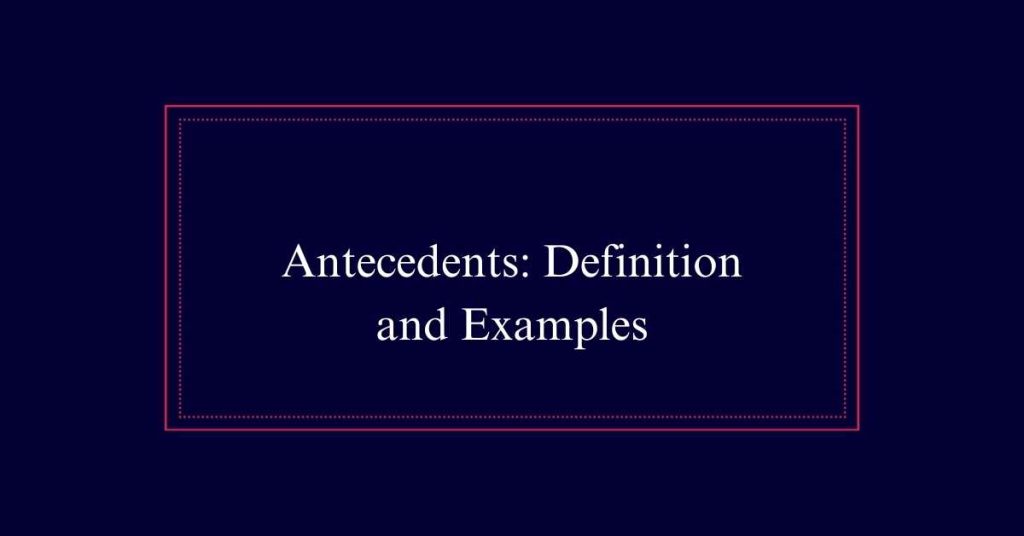
Today, antecedents play an important role in English grammar, helping to maintain coherence and avoid ambiguity. They are foundational in understanding how different parts of speech interact within a sentence.
Antecedents and Pronoun Agreement
Proper antecedents and pronoun agreement are essential for clear and effective communication in writing. An antecedent and its pronoun must agree in number and gender.
For example, if the antecedent is singular, the pronoun must also be singular. Similarly, a plural antecedent requires a plural pronoun.
Consider the sentence, ‘The dog chased its tail.’ Here, ‘dog’ is the singular antecedent, and ‘its’ is the singular pronoun.
When the antecedent’s gender is unknown or non-binary, using ‘they’ as a singular pronoun is appropriate. Ensuring that antecedents and pronouns match helps avoid confusion and maintains clarity in writing, allowing readers to easily understand the relationships between different parts of the text.
Compound Subjects and Pronouns
In sentences with compound subjects, pronouns must agree with the collective number and gender of the subjects. For example, in the sentence ‘John and Mary brought their books,’ the pronoun ‘their’ is plural to match the compound subject ‘John and Mary.’
If the subjects are of mixed gender, the pronoun should reflect that combination. When compound subjects are singular, the pronoun should be singular as well. For instance, ‘The cat and the dog chased its tail’ would be incorrect; instead, use ‘The cat and the dog chased their tails.’
Ensuring that pronouns correctly match compound subjects helps maintain grammatical accuracy and clarity in writing. This agreement is essential for clear communication and effective sentence structure.
Singular They Usage
Using ‘they’ as a singular pronoun addresses the need for gender-neutral language. This usage is particularly important when the gender of the antecedent is unknown or irrelevant.
For instance, in the sentence, ‘Every student should bring their book,’ ‘their’ refers to ‘every student,’ a singular antecedent. This approach promotes inclusivity and respects non-binary individuals.
Traditionally, ‘he’ or ‘she’ was used, often leading to gender biases. Modern grammar recognizes ‘they’ as an acceptable singular pronoun, aligning language with contemporary values. It guarantees clarity while avoiding assumptions about gender.
Clauses Affecting Agreement
When clauses intervene between an antecedent and its pronoun, maintaining agreement in number and gender can become important. These intervening clauses may contain nouns of different numbers or genders, potentially causing confusion. It’s essential to identify the correct antecedent to guarantee proper agreement.
For example, consider the sentence: ‘The teacher, who had many students, gave his lecture.’ The antecedent ‘teacher’ is singular and male, so the pronoun ‘his’ should be used, despite the plural noun ‘students’ in the intervening clause.
Here’s a table to illustrate:
| Sentence | Antecedent | Correct Pronoun |
|---|---|---|
| The team, who won their game, celebrated. | team | their |
| The artist, who loves her work, painted a mural. | artist | her |
| The dog, which lost its collar, was found. | dog | its |
Clarity Through Antecedents
Maintaining agreement in number and gender is a key aspect of ensuring clarity through the use of antecedents. When pronouns agree with their antecedents, readers easily understand the text.
Singular antecedents require singular pronouns, and plural antecedents need plural pronouns. Gender agreement is also essential. For example, ‘Sarah’ should match with ‘she,’ and ‘workers’ should match with ‘they.’
Key points for maintaining clarity through antecedents:
- Ensure the antecedent and pronoun agree in number.
- Match the gender of the pronoun with the antecedent.
- Place antecedents close to their pronouns for easy reference.
These practices reduce confusion and improve the flow of writing, making it clearer and more coherent for readers.
Enhancing Readability
How can the strategic use of antecedents enhance the readability of your writing? By clearly linking pronouns to their antecedents, writers can avoid confusion and create smooth reading. This clarity directly improves the reader’s understanding and engagement. When antecedents are clear, the text flows better, and readers can follow the narrative or argument without unnecessary pauses.
Here is a comparison to illustrate the impact of using antecedents effectively:
| Without Clear Antecedents | With Clear Antecedents |
|---|---|
| Jane and Mary arrived. She was late. | Jane and Mary arrived. Mary was late. |
| The manager spoke to the team. They listened. | The manager spoke to the team. The team listened. |
| The cat chased the mouse. It escaped. | The cat chased the mouse. The mouse escaped. |
Clear antecedents make your writing more readable.
Proper Noun Antecedents
Clear antecedents are essential for readability, and proper nouns serve as straightforward and unmistakable antecedents in writing. Proper nouns, such as names of people, places, or specific objects, provide clear references for pronouns, guaranteeing no confusion about whom or what is being discussed.
For example, in the sentence ‘Alice forgot her book,’ ‘Alice’ is a proper noun antecedent for the pronoun ‘her’.
Benefits of using proper noun antecedents include:
- Clarity: Proper nouns leave no doubt about the pronoun reference.
- Precision: Specific names help readers follow the narrative easily.
- Readability: Clear antecedents enhance the overall flow of the text.
